FCFW, the property manager, is responsible for maintaining anything that is considered a ”system“ of the property, including HVAC, plumbing, electrical, fixtures, appliances, equipment, and structural aspects, provided they are not damaged, abused, misused, or neglected by you. You are expected to maintain your home and keep it in as good a condition as when you took possession. Routine maintenance and repairs due to normal wear is provided/paid for by FCFW. You are charged for repairs caused by misuse, abuse, or neglect.
Do not make any repairs or authorize any maintenance work without our prior written permission. All repairs must be authorized by FCFW. Rent cannot be withheld because of needed repairs nor can the cost of needed repairs be deducted from rent. You will not be reimbursed for any unauthorized repairs that you make. Please report any maintenance items promptly by submitting a maintenance request:
Please keep the walls and baseboards clean and unmarred. Do not paint or wallpaper the walls. You are welcome to hang pictures on the walls, as long as the walls are clean and unmarred upon vacating. Use only 30 lb. picture hangers found at most hardware stores. All ceilings, ceiling fans, and blinds must be dusted/vacuumed regularly and clean before vacating.
Your Responsibilities
You have a duty to maintain your residence to uniform codes of safety for Landlord/Tenant Law. We want you to report maintenance items promptly.
However, there are items that are your responsibility:
- Replace light bulbs with the correct type and size
- Replace furnace air filters every three months with 90-day filters or monthly with 30-day filters
- Replace smoke alarm batteries
- Report non-functioning smoke alarms immediately if batteries do not solve the problem
- Report all necessary repairs promptly
- Professional steam cleaning and spot cleaning of carpets while residing in the property
- Normal insect control, Normal rodent control (such as mice)
- Utilities must remain on during tenancy, to include times of deployment or vacation
- Disposal of all garbage in the proper receptacles and using the weekly pick up service
- Disposing of toxic waste properly in accordance with local and county laws
Garbage Disposal 

Be careful with the garbage disposal. The disposal may jam when foreign objects are allowed into the sink opening. If the disposal fails to operate, follow these steps:
- verify that the power is OFF;
- turn the blades backwards with a 1/4" Allen wrench;
- reset the power to the disposal by pressing the reset button (typically red) found on the bottom of the disposal; and
- check the circuit breaker in the main electrical panel.
If the unit fails to work after performing these steps, notify us for service. Be aware that you are responsible for plumbing problems caused by excess grease in the plumbing lines. ALWAYS RUN WATER WHILE USING THE DISPOSAL TO PREVENT BUILD-UP OF PARTICLES IN THE DRAIN LINE. Throw some ice down occasionally.
Ice does not sharpen the shredders (as is commonly believed) but occasional use of a few ice cubes does knock off any debris buildup on the sharp edges that can keep them from grinding food properly. Toss small sliced orange peels or other citrus rinds in the disposal occasionally to keep it smelling fresh. Large pieces of citrus peel, e.g. half a lime, can jam a disposal. DO NOT INSERT YOUR HAND INTO THE DISPOSAL OPENING AT ANY TIME FOR ANY REASON.
You will be charged a service fee for unblocking the garbage disposal if any of the following are found to have blocked the disposal: bones, pumpkins, banana peels, corn husks, stringy vegetables, ”twister“ type seals, screws, nails, cigarette butts, flower clippings, toys, coins, grease, shellfish shells, potato peels, meat fats, bottle caps, rubber bands, string, popcorn kernels, egg shells, coffee grounds, glass, utensils, fruit pits, washcloths, sponges, or any other items of similar nature as listed above. Good rule of thumb … if you can’t chew it, don’t put it in the garbage disposal.
Water Shut-off
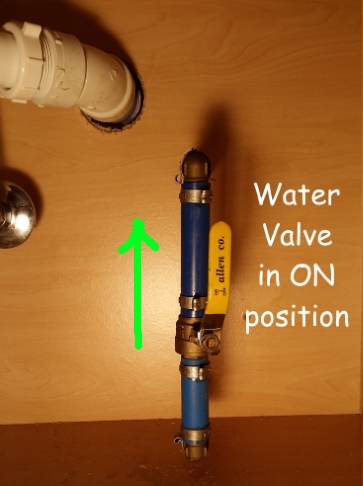
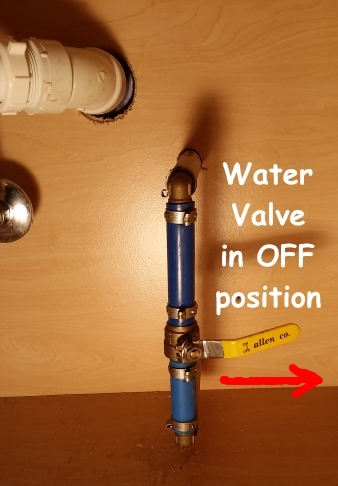
Locate the main water cut-off valve for use in case of an emergency. Your unit has a single valve (located under the bathroom sink; units 712 and 713: rear bathroom; units 715 and 716: front bathroom) which stops all water from flowing in the interior water lines. Most fixtures have individual cutoffs (e.g. to shut off a leaking toilet), without loss of service to the rest of the water supply. It is your responsibility to know the location of these cutoffs and how to use them to prevent excessive water damage to your possessions and the property in the event of an emergency.
Wood Laminate Floors
Wood flooring provides an attractive and comfortable living environment. They are easy to maintain, but require some specific precautions:
- Avoid walking on the wood laminate floors with spiked or damage-heeled shoes
- Wipe up spills immediately with a slightly dampened cloth; water left on the floor can result in discoloration, warpage, and buckling
- Don’t use oil soaps, liquid or paste wax, or other household products containing lemon, citrus, or Tung oil, or silicon to clean floors
- When moving heavy furniture, do not slide it on wood flooring. It is best to pick up the furniture to move it and to prevent scratches
- Use throw rugs at doorways to help prevent debris from being tracked in and scratching the floor
Electrical Power
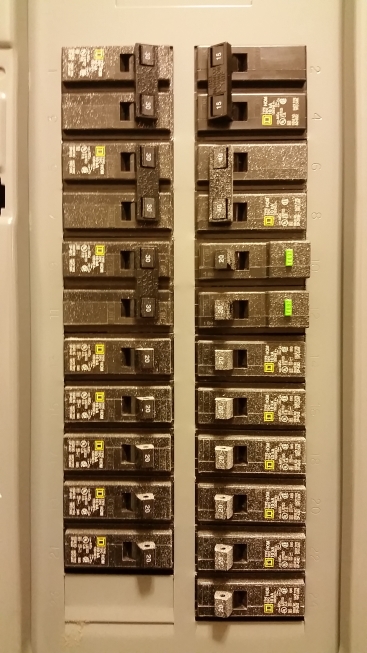

Locate the circuit breaker panel, located on the left interior wall as you enter the front door (behind the open door). These are operated on/off by flipping a rocker switch. To check breakers, turn them off and then on again. Often a tripped breaker moves only slightly and cannot be detected at first glance. There is a legend on the inside of the breaker box door indicating which circuits the breakers control. CIRCUIT BREAKERS ARE NOT DESIGNED TO BE USED DAILY OR AS SUBSTITUTE ON/OFF SWITCHES.

GFCI (Ground Fault Circuit Interrupter) circuits are included in the kitchen, bathroom, deck, and patio areas acting as a safety device to cut power when an abnormality (such as a short or overload) is detected. These breakers may be identified by a red button in the circuit breaker box or are otherwise different in appearance from other breakers. Another type of GFCI looks like the typical wall outlet with a test/reset button between the plug-ins. Always check the GFCI breaker(s) before requesting maintenance. ALL BREAKERS SHOULD REMAIN ”ON“.
Covers on exterior outlets should remain closed when not in use. The rear deck/patio outdoor outlet is wired through the front deck/patio GFCI. You may need to reset the front GFCI if the rear outlet is not operational.
Central Air Conditioning 
Your cooling and heating system is operated by the thermostat. Do not set the desired temperature below 68°F. Selecting a lower temperature will not increase cooling capacity and may cause damage to the unit. An air conditioning unit overloaded to failure provides no cooling at all and repairs can take several days. Do not set the temperature above 80°F or turn the unit off during the warm season. The cooling system also acts as a dehumidifier reducing the moisture content of the air. Excessive humidity can result in mold growth.
Your HVAC system uses an air filter or screen to prevent larger airborne particles (up to 40 microns) from entering the system and clogging sensitive machinery. A system that has a dirty filter can suffer from pressure drop, which can lead to reduced air flow, or ”blow-out,“ resulting in no air infiltration at all. Any of these conditions can cause the system to work harder to keep the unit warm or cool (depending on the season and the setting). And any mechanical component that has to work harder to run efficiently puts undue stress on the whole system, which can lead to premature failure, resulting in repair or replacement.
Also, a dirty filter that’s exposed to condensation can become damp, which can lead to mold growth that spreads throughout the home through the HVAC system. This can lead to serious health consequences, not to mention a compromised unit that likely requires servicing and may require replacement, depending on the severity of the moisture problem.
It is your responsibility to change the filters regularly, at least every three months. An inexpensive filter protects the HVAC system, but has little to no effect on cleaning the air. Purchase 20 x 20 x 1 size filters with a life rating of 90 days or greater. The advantages of frequently changing air filters are:
- allow maximum cooling in extreme heat conditions
- reduce your energy bill
- capture indoor air pollutants
- lower air-related allergy/asthma indoor triggers
- diminish the growth of mold and mildew
- protect the unit from overload
There are three rating systems created by different organizations. MERV (Minimum Efficiency Reporting Value) is the domestic and international industry standard rating system established by the American Society of Heating, Refrigerating, and Air Conditioning Engineers. MPR (Micro-Particle Performance Rating) was developed by 3M and FPR (Filter Performance Rating) was developed by The Home Depot. The two most common filter types are:
- Disposable fiberglass – The most economical type of filter; usually have a MERV rating of 2 to 6. These mostly protect the furnace and keep it clean and don’t provide much in the way of air filtration.
- Disposable pleated – These commonly used filters usually have a MERV rating of 6 to 12. A good, all-purpose choice for filtering the air that the furnace blows through your home.
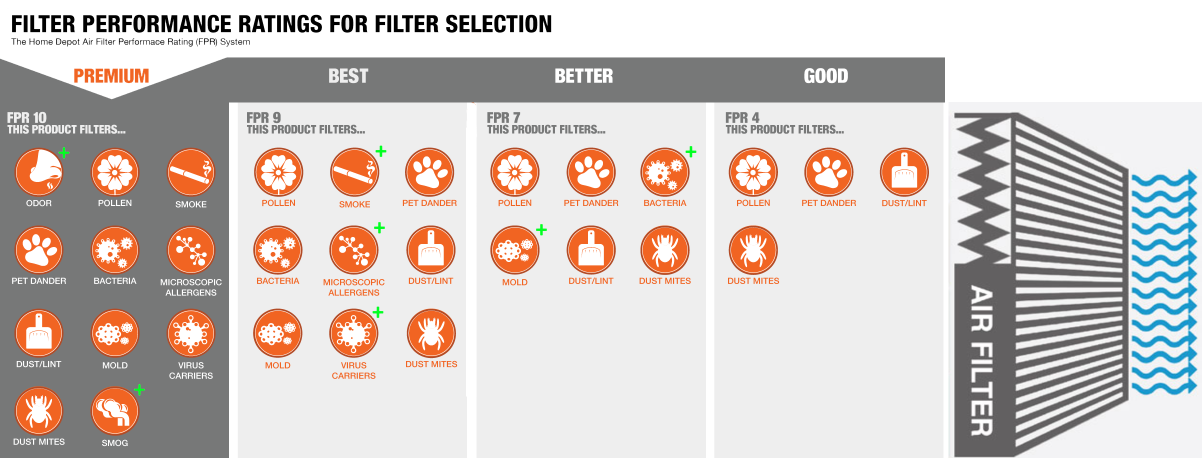
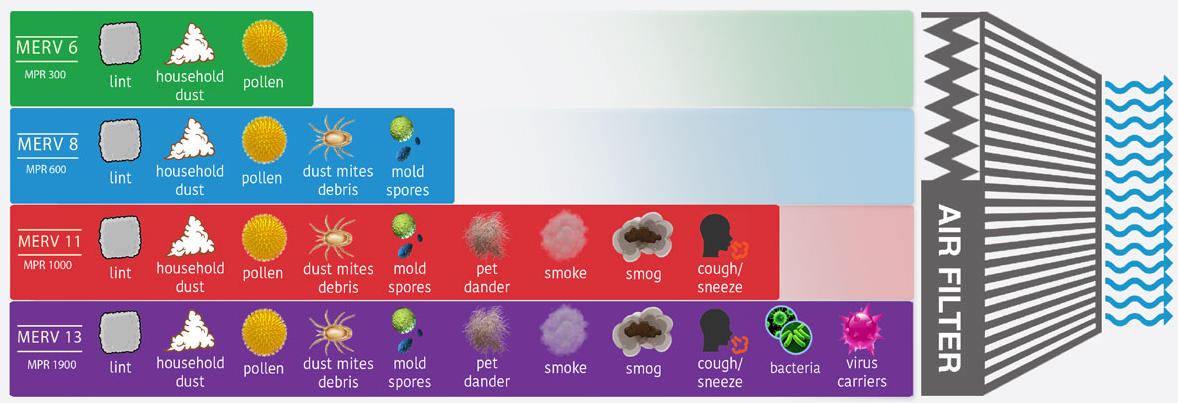
Your system uses a heat pump to provide both heating and cooling from a single unit. Heat pumps operate efficiently in all but the most extreme temperatures. They also have an auxiliary/emergency backup system which assures you of heat in the event of a primary system failure. The back-up system can: a) supplement the heat output of the system when the weather is extremely cold or b) provide emergency heat when a primary system outage occurs.
Should you notice water dripping from the interior portion of the heat pump during air conditioning season, shut off the unit and contact FCFW. Change heat pump return-air filters regularly as they move large volumes of air. A new filter reduces the amount of dust in your home, prevents damage to the heat pump and increases heating and cooling efficiency, thereby lowering utility costs. The expense of repairs needed due to clogged filters is charged to the resident.
Heat pumps are most efficient when you select a temperature you find comfortable, set the fan control on auto and then leave the settings alone. Turning the thermostat up and down uses more energy than simply allowing the unit to regulate a preset temperature. The output from a heat pump (in the heat mode) only feel lukewarm to you since this air is in the 80° - 90° range, lower than your body temperature. The most reliable way to verify that the heat pump is working properly is to compare the temperature you have selected against the reading on the thermometer. If there is a large disparity between the two, contact FCFW. Do not set the thermostat for temperatures lower than 68°F or higher than 80°F as this may cause damage to the heat pump system during extreme weather conditions.
Smoke Alarms 
It is vital that smoke alarms are operational at ALL times. There is a smoke alarm outside of each bedroom. These units are hard-wired A/C powered smoke alarms. Normal operation is indicated by the Green LED ON and the Red LED flashing once per minute. This type of alarm has a battery back-up, which emits a beeping sound indicating that it must be replaced. The Smoke Alarm requires one standard 9V alkaline battery. This is your responsibility. REPORT PROBLEMS OR FAILURES OF SMOKE ALARMS IMMEDIATELY.
Washer - Dryer 

The connections should be checked periodically to ensure that no leaking is occurring. Dryer filters should be cleaned after each use and the vent hose should be free of kinks or other restrictions. Damage to laundry equipment resulting from misuse or neglect is your responsibility. Always turn off supply valves when away on vacation or other extended periods of time. Supply lines are always under pressure and a ruptured hose can cause extensive damage to your personal effects and the property.
Range - Cooktop and Oven 
The electric range will not operate if the circuit breaker is tripped. If the range will not turn on, try the broiler to check the upper element. If neither element comes on, check the timer. If the timer is activated, reset the manual control. A timer that is active will prevent the range from working. Check the broiler and baking elements for proper heating. The self-cleaning oven has a safety latch on the top of the door and uses extreme heat to clean. Carefully follow instructions on the oven to clean. DO NOT use cleaners of any kind on a self-cleaning oven.
Refrigerator 
This appliance requires little in the way of upkeep; however, you should keep coils and grate free of dust and other debris. The refrigerator MUST always be kept running. DO NOT use sharp instruments to dislodge ice buildup. This no-frost model normally shuts off for a period each day to perform the defrost function controlled by an internal timer. Keep seals/gaskets clean and free of mildew. If you must move the refrigerator at any time, exercise extreme caution to avoid damage to the appliance or the floor for which you would be responsible.
Dishwasher 
A dishwasher should run through a complete cycle at least once a week to keep the seals properly lubricated. Failure to do so may damage the dishwasher and result in leaks for which you would be responsible. Use only dishwasher-type detergents.
Extermination
Report any pest problem within five (5) days of possession. If not reported in writing, it is agreed that the premises have no infestations. Any future infestation of any kind will be your responsibility. You are responsible for reporting any suspected or known termite infestation. You are not responsible for termite control and we assume no responsibility for the treatment for bedbugs, roaches, mice, ants, fleas, rodents, or other pests. Please notify us if you suspect any termite or wood-destroying insects around the house or grounds. You will be charged for any damage caused by uncontrolled pests (e.g., ants and wasps building nests in the air conditioning unit, as this can damage the unit).
Interior Door - Twist-button Lock
The bedroom and bathroom doors use a twist-button locking mechanism which only operates from inside the room. They are designed for privacy and not for security. The horizontal position of the twist-button is the normal unlocked state whereas the door is locked when the twist-button is vertical. Rotate the twist-button a quarter-turn counter-clockwise to lock the door or a quarter-turn clockwise to unlock the door.
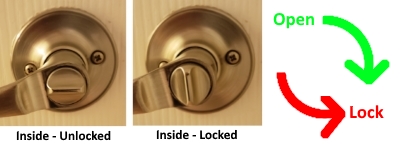
To open a locked door from outside the room, insert a small flathead screwdriver (1/8-inch maximum width) into the keyhole of the outside knob. There is a slot inside this knob that the screwdriver must fit into. Insert the screwdriver as straight as possible and give it a quarter-turn counter-clockwise to unlock the door (or a quarter-turn clockwise to lock the door). If the screwdriver turns more than a quarter-turn and the door does not open, the screwdriver probably did not fit into the internal slot. This may take a few attempts.


Exterior Door Locks
There is both a deadbolt and a key lock on the front and rear entry exterior doors. They are all setup to operate with the same key.
Unoccupied Unit
When a unit is unoccupied for an extended period, maintenance issues may go undetected and/or other problems may arise unknown to the residents or the property manager. These issues/problems may include the lack of heat or cooling, running water left on, a leaky faucet, a stove left on, an electrical issue, or the shut-off of a utility. Such issues can result in damage to the property and/or its contents, including, but not limited to, frozen/burst pipes, flooding, or fire. The damage can extend to other units and/or affect the safety of neighboring residents.
Review the following recommendations before school breaks or other periods of over one week when the unit will be vacant. Follow these suggestions to help ensure that when you return, you find your home just as you left it.
- Adjust the thermostat — The Heating and Air Conditioning (HVAC) system must operate at ALL times. Adjust the thermostat a bit to save on electricity cost. A good rule of thumb is to keep it a few degrees from its normal setting depending on the season — higher during the summer months (perhaps 75 degrees) and lower during the winter months (perhaps 68 degrees). Do NOT turn off the HVAC completely — keep enough air circulating to control humidity and mold in the summer and prevent frozen (and burst) plumbing in the winter.
- Turn off the main water supply — Leaks happen. Murphy is particularly active while you’re away. Nothing ruins the glow of a good vacation like returning to a flooded home. See the Water Shut-off instructions above.
- Unplug electronics — even if they’re not ”powered on“, electronics are energy vampires. Unplug the TV, toaster oven — anything that needs to be juiced — to save electric utility costs. This practice also helps prevent an electrical fire and protect sensitive equipment from a lightning strike.
- Use a timer — Nothing screams ”Come rob me!“ like an apartment with its lights continually off. Deter would-be burglars by putting timers on lights in different rooms. Set them to go on and off at various times throughout the night to confuse outsiders as to if you’re there.
- Adjust the blinds — You don’t want your empty home on display, but you don’t want to shut the blinds if you never do that. Partially closed is a happy medium — it helps to block the view and gives your home an ”occupied“ appearance.
- Empty the trash — Take out the trash before you leave so you don’t come home to ants, flies and a horrible stench.
- Make sure all windows are locked — Windows can be left unlocked — it happens. Maybe you just plain forgot after you had to air out the house from burning the breakfast bacon. An unlocked window is a perfect opportunity for a burglar to sidle on in.
- Discard perishables — Eat up or give to a friend any food that will expire or spoil before you leave. Discard any remaining expired or soon to expire food items. Avoid returning to an unexpected science experiment.
- Seal open boxes of food and dried goods — You know the saying: When the cat’s away, the mice will play. But that doesn’t mean they need to play in the pantry. By putting dried goods (pasta, rice, nuts) and other foods in airtight containers, you’ll deter any critters from having a field day. Discard any expired food items here as well.
- Pour baking soda down the drains and toilet — Baking soda is amazingly useful. When you combine it with vinegar, it freshens the drain (and helps clear clogs too). Pour about a cup down the drain and toilet to avoid playing ”What’s that smell?“ when you get home.
- Remove wet clothes from the washing machine or drier — unless you are trying to grow the next miracle antibiotic
- Check the oven and stove — You don’t want anything gnawing at you while you’re trying to decompress.
- Clean up the kitchen — Clean out the sink trap and hit the garbage disposal with some vinegar to prevent any yucky smells from brewing while you’re away.
- Run the dishwasher — after filling it with any items from the sink or counter.
- Clean your home — Your post-vacation self with thank you for taking care of the nitty-gritty.
- Water the plants — You don’t want them to go thirsty while you’re away! Also get rid of any fresh flowers — they might not make it while you’re gone and could start to smell.
- Check up on your insurance — Knowing what your insurance policies (car, renter) cover could save you both time and money if something happens while you’re away. Did you know the stuff you take with you on vacation is probably covered by your renter’s policy?
